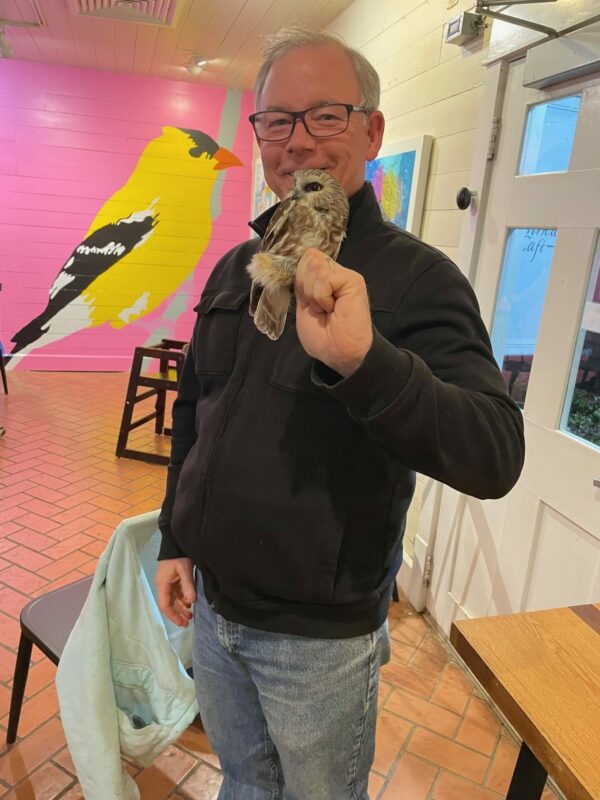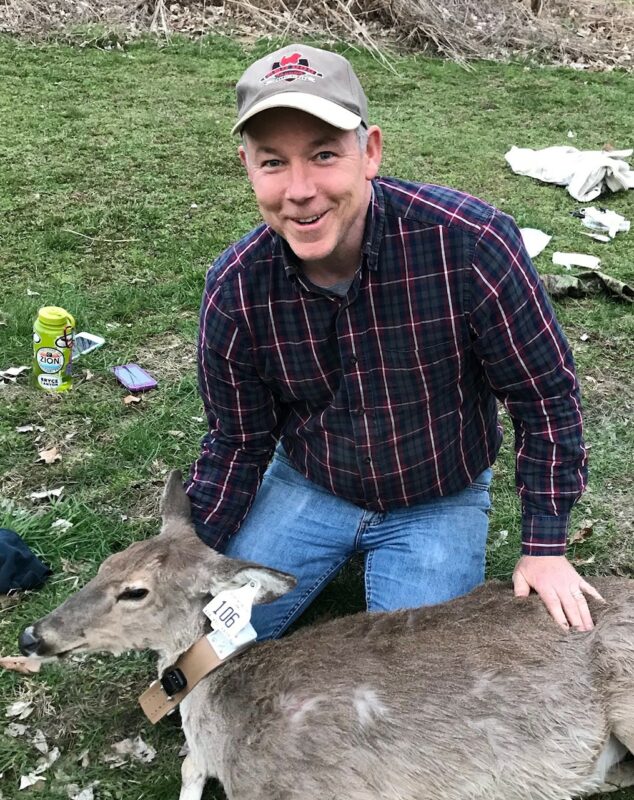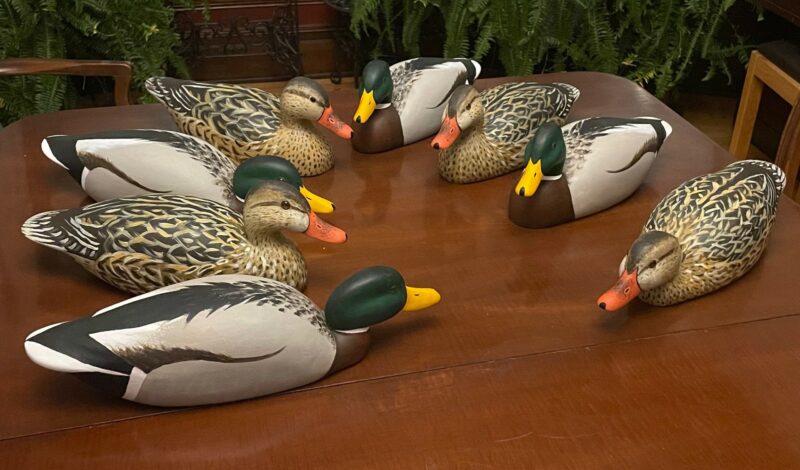By: Grace Mott
The Renewable Energy Wildlife Institute is thrilled to welcome our new Director of Research, Dr. Eric Schauber. Eric brings over 30 years of experience as a wildlife ecologist, professor, and expert in modeling and quantitative analysis. Before joining REWI, he was the Executive Director of the Illinois Natural History Survey, the preeminent state natural history survey in the U.S. since 1858, where he managed a team comprised of hundreds of researchers and graduate students and led a wide range of research initiatives.
Much of his research has addressed practical conservation topics involving spatial elements such as habitat fragmentation, movement and contact patterns, and dynamics between refuges and hot spots of risk. He has led studies ranging from pesticide effects on small mammals to Lyme disease risk to the social behavior of deer.
Prior to his position as Executive Director, he taught and conducted research as a member of the Cooperative Wildlife Research Laboratory and Department of Zoology at Southern Illinois University Carbondale. He holds a Ph.D. in Ecology from the University of Connecticut, a Master’s in Wildlife Science from Oregon State University, and a Bachelors in Wildlife Biology from the University of Massachusetts Amherst.

What drew you to work at REWI?
We are at a pivotal moment on this planet, where the actions we take now and over the next 10-20 years to supply the energy we need in a sustainable manner will have repercussions that compound dramatically in the decades and centuries ahead. Taking on this role in REWI provides a unique opportunity to impact how successfully we address both the global warming crisis and the biodiversity crisis, by generating and sharing the objective information needed to maximize benefits and minimize harm.
What experiences and skills from your previous work, professional and academic, are you excited to bring to REWI?
Curiosity is still fundamentally my driving force. I love learning what others have found out and trying to answer unanswered questions about animal behavior, wildlife populations, and ecosystems. I’ve worked on a very broad range of organisms and topics, and often find that I can apply concepts or approaches from one context to another. Much of my research has focused on how movement and other behaviors of individual animals can be causes and consequences of changes in their populations and surrounding communities, which is a framework that lends itself well to measuring and optimizing how wildlife and ecosystems are affected by renewable power development. Along the way, I gained experience implementing a wide range of study designs and critically considering how to draw valid inference from each. I have worked to hone my craft in scientific writing & presentation, as well as communicating effectively with a broader audience.
What do you hope to see the REWI research program do in the next few years? How would you like to see it grow?
Maintaining and enhancing REWI’s standing as a trusted source of objective information is paramount to everything the research program does. I am especially keen for REWI research to advance the field beyond documenting & estimating immediate direct impacts at individual sites, to meaningful assessment of potential effects at population and higher levels in a landscape context. Forging new collaborations and successfully competing for new funding sources will be needed to tackle larger questions about community- and ecosystem-level responses to both solar and wind power development. Identifying ways to truly generate positive habitat value, either through compensatory mitigation or site practices, will be an important step forward.
Is there a current or upcoming research project/initiative you are most excited about?
I’m excited to help develop the concept of solar facilities as ecosystems, initiated by Solar Program Lead Josh Ennen and my predecessor, and work on turning it into an operational framework with prioritized research initiatives to fill critical knowledge gaps. This is a pretty wide-open area so there is a lot of room to team with a broad suite of scientists and garner stakeholder input.
On a more concrete but urgent level, the Hoary Bat Initiative that Wind Program Lead Shilo Felton is implementing is absolutely critical to the long-term viability of both the hoary bat population and the wind power rollout in the U.S. Improving minimization approaches while also finding creative and expeditious ways to cast light into the black box of hoary bat population ecology are daunting but exciting challenges.
How did you originally get into wildlife conservation? 
Animals have aways fascinated me, and field guides were some of the first books I read. I was thrilled to learn that “Wildlife Biologist” is an actual feasible profession. My first field job capturing and tracking black bears was amazing, but being present at a moment of discovery late at night at the salamander tunnels in Amherst, Massachusetts, really hooked me on the excitement of doing science as opposed to learning science.
What do you enjoy doing outside of work?
Hiking, fishing, hunting, and kayaking whenever I can get a chance. I also carve and paint waterfowl decoys and enjoy messing about in boats. I play guitar and also occasionally get the opportunity to work with my talented wife in murder mystery dinners and other theatrical events. We love to watch our high-schoolers perform in musicals and Special Olympics events.
